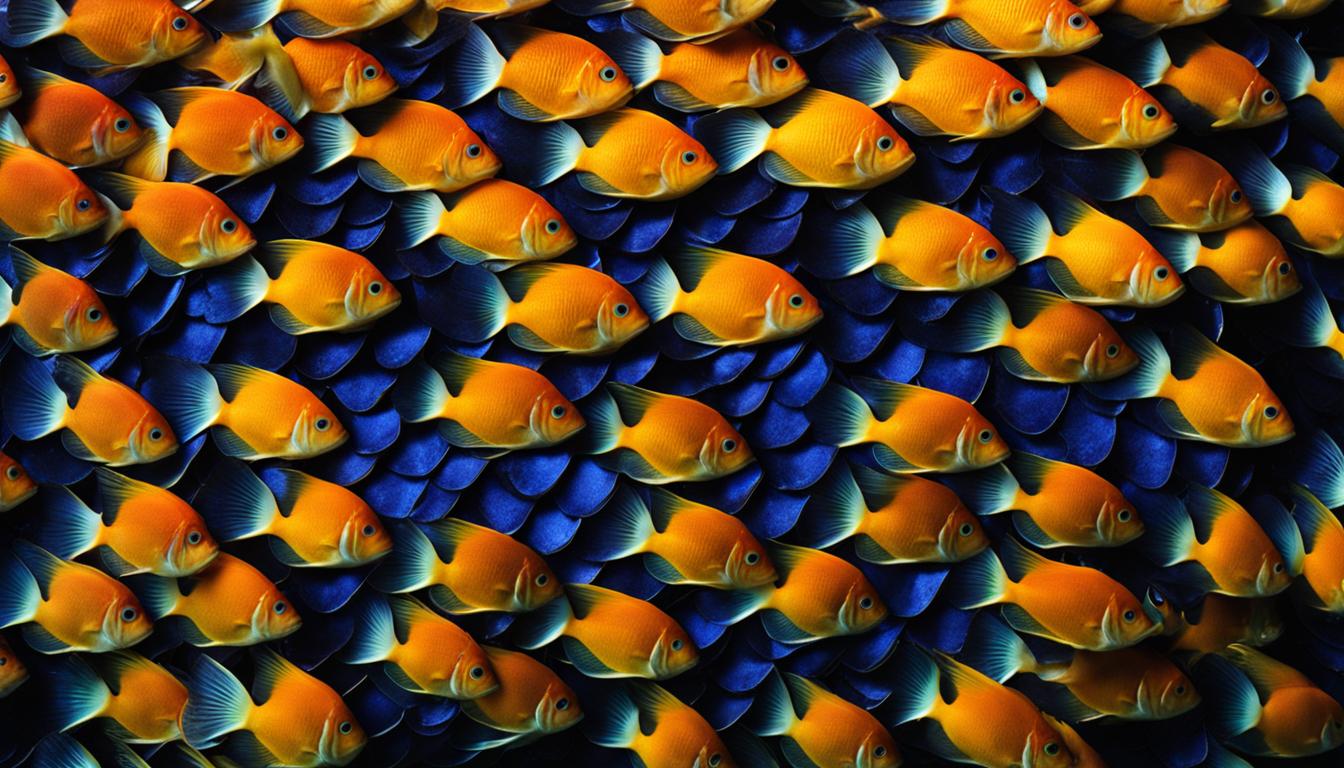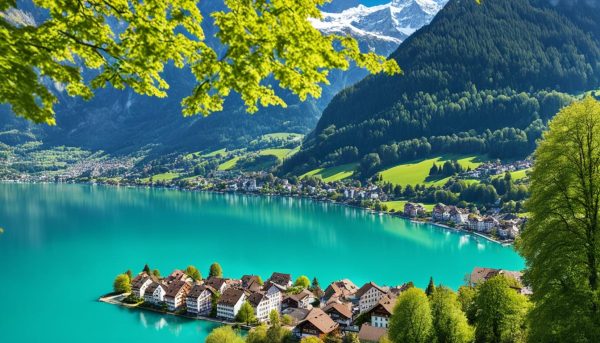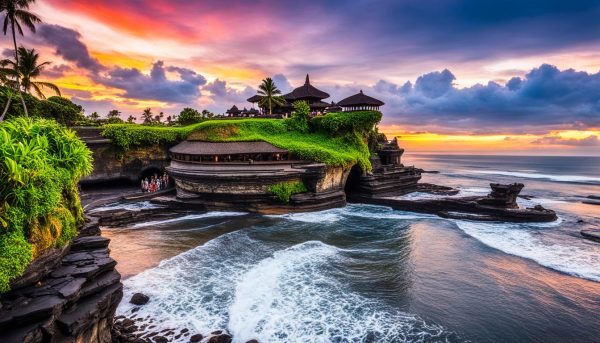Underwater photography is a fascinating realm that allows us to explore the captivating beauty of fish and aquatic life. From vibrant reef fish to majestic oceanic creatures, the underwater world offers endless opportunities for stunning photography. However, capturing the essence of these underwater wonders requires specialized techniques and a keen eye for detail.
In this article, we will delve into the art of underwater photography, focusing specifically on fish photography. We will uncover the key techniques that will enable you to capture breathtaking images and showcase the mesmerizing diversity of marine life. Whether you are an aspiring photographer or a seasoned professional, these techniques will help you navigate the unique challenges posed by the underwater environment and create exceptional photographs.
Key Takeaways:
- Underwater photography offers a captivating way to explore and capture the wonders of the underwater world.
- Finding a focal point is crucial for creating visually interesting compositions in underwater photography.
- Utilizing unique angles can add depth and interest to your underwater images.
- Getting closer to your underwater subjects allows you to capture their intricate details and textures.
- Exploring portrait orientation can enhance the sense of depth and visual impact in underwater compositions.
- Paying attention to small details and incorporating them into your shots can add creativity and movement to your photographs.
- Mastering composition techniques such as the rule of thirds and foreground-background balance can greatly enhance the impact of your underwater images.
Finding the Perfect Focal Point
To create visually interesting images, it’s important to find a focal point in your underwater photographs. The focal point serves as the main subject or point of interest in your composition, drawing the viewer’s attention and creating a captivating visual experience.
Your focal point could be a vibrant fish swimming gracefully through the water, an interesting rock formation that adds texture and depth to your shot, or a mesmerizing play of light filtering through the underwater world. By strategically placing and highlighting a focal point, you can guide the viewer’s eye and tell a story through your photograph.
When selecting a focal point, consider the composition and balance of your shot. Place the focal point off-center using the rule of thirds, which divides your frame into a grid of nine equal parts. Positioning your subject along the intersecting lines or at one of the four points where the lines intersect can create a visually pleasing composition.
Here are a few techniques to help you find the perfect focal point:
- Observe and Explore: Take the time to observe your surroundings and explore the underwater environment. Look for unique subjects that catch your eye and pique your interest.
- Patience and Persistence: Sometimes, finding the perfect focal point requires patience and persistence. Keep exploring and experimenting until you discover that captivating element that will make your photograph stand out.
- Experiment with Depth: Consider the depth of your shot to add interest and dimension. Include foreground elements in your composition to provide context and lead the viewer’s eye towards the focal point.
- Play with Perspective: Experiment with different angles and perspectives to add a fresh and unique look to your photographs. By changing your viewpoint, you can discover new focal points and create diverse compositions.
Remember, the focal point is what captures the viewer’s attention and allows them to connect with your photograph. It can be the key to creating powerful and impactful underwater images that leave a lasting impression.
Utilizing Unique Angles
Underwater photography provides a remarkable opportunity to capture breathtaking images from unconventional perspectives. By exploring different angles, you can add depth and intrigue to your underwater photographs. In this section, we will discuss two distinct techniques that can help you achieve unique angles: looking up towards the water’s surface and incorporating the ceiling and seafloor as compositional elements.
Looking Up
When you look up towards the water’s surface, you open up a whole new world of possibilities. This perspective allows you to capture stunning shots with natural sunlight filtering through the water, creating mesmerizing rays of light. By positioning your subject against the backdrop of the shimmering water surface, you can produce ethereal and captivating images.
Take a moment to imagine the dynamic composition that can be achieved by capturing a fish silhouetted against the glistening surface, or the intricate details of coral bathed in the soft glow of sunlight. This angle not only enhances the visual appeal of your photographs but also brings a sense of serenity and wonder to the viewer.
Utilizing the Ceiling and Seafloor
Don’t limit your photographic perspective to the traditional horizontal plane. The unique environment underwater allows you to utilize the ceiling and seafloor as compelling compositional elements. By consciously including these elements in your frame, you can create striking contrasts and highlight the vastness of the underwater world.
“Incorporating the ceiling and seafloor into your underwater photographs adds a sense of depth and dimension, making them truly captivating.” – Sarah Thompson, professional underwater photographer
Picture a vibrant school of fish swimming above you, with the bottom of the sea as your backdrop. By positioning yourself to capture this scene, you can create a sense of being immersed in a bustling underwater ecosystem. Alternatively, you can position your subject against the seafloor, utilizing the textures and colors of the marine landscape to enhance the overall composition and create visually stunning images.
When using the ceiling and seafloor as compositional elements, it’s essential to pay attention to the overall balance and symmetry of your photograph. Experiment with different angles, distances, and perspectives to create the desired impact.
Remember, the beauty of underwater photography lies in its ability to capture perspectives that are not readily accessible to the human eye. By utilizing unique angles, such as looking up towards the surface and incorporating the ceiling and seafloor, you can create fascinating and extraordinary images that showcase the mesmerizing wonders of the underwater world.
Getting Closer to the Subject
To capture the intricate details of underwater subjects, it’s important to get closer to them. By zooming in or using macro photography techniques, you can highlight the colors, patterns, and textures of the marine life. However, it’s vital to approach the subject respectfully and not disturb their natural environment.
Underwater photography reveals a world of hidden wonders and intricate details that often go unnoticed. By getting closer to the subject, you can uncover the mesmerizing beauty that lies beneath the surface.
Zooming In for Underwater Details
Zooming in allows you to focus on specific elements, revealing fascinating underwater details. Whether it’s the intricate patterns on a seahorse’s skin or the vibrant hues of coral, macro photography brings these intricate details to life.
When using a zoom lens, adjust your focal length to capture the fine textures and intricate details up-close. Zooming in opens up a whole new world of underwater photography, showcasing the remarkable features that make each subject unique.
“Getting closer to the subject reveals a world of hidden details and breathtaking beauty.” – Andrew Thompson
Respecting the Natural Environment
As underwater photographers, it’s our responsibility to respect and protect the marine life we capture. When getting closer to the subject, always prioritize their well-being and the preservation of their habitat.
Here are a few guidelines to follow when approaching underwater wildlife:
- To avoid disturbing the subject, move slowly and cautiously.
- Never touch or harass the marine life.
- Minimize your impact by maintaining a safe distance.
- Utilize natural light or appropriate artificial lighting to prevent stress to the subjects.
| Benefits of Getting Closer | Considerations |
|---|---|
| Reveals intricate patterns and textures | Respect the subject’s personal space |
| Highlights vibrant colors and details | Avoid disturbing the natural environment |
| Creates a sense of intimacy with the subject | Use appropriate lighting techniques |
Exploring Portrait Orientation
When it comes to underwater photography, many photographers instinctively choose the landscape orientation for their images. However, venturing into portrait orientation can unlock a whole new dimension and bring depth and visual interest to your underwater compositions.
By embracing portrait orientation, you have the opportunity to include elements such as the water surface or the mysterious depths below, adding a sense of “depth” to your images. This approach not only enhances the overall composition but also showcases the captivating colors and play of light that the underwater world has to offer.
Consider incorporating the water surface as the upper part of your portrait frame, capturing the distinct boundary between the underwater realm and the air above. This inclusion can create a fascinating contrast, emphasizing the unique environment in which your subject resides.
Alternatively, if you choose to depict the depths of the sea in your portrait orientation, you can evoke a sense of mystery and intrigue. The vastness below can enhance the overall depth in your composition and draw the viewer’s gaze into the hidden wonders of the underwater world.
Furthermore, portrait orientation allows you to experiment with different compositions and subject placements. Placing your subject off-center, adhering to the rule of thirds, can create a dynamic and visually appealing image that captures attention and enhances the overall balance.
Portrait Orientation in Underwater Photography Examples
Let’s take a look at a few examples of portrait orientation in underwater photography:
| Image | Description |
|---|---|
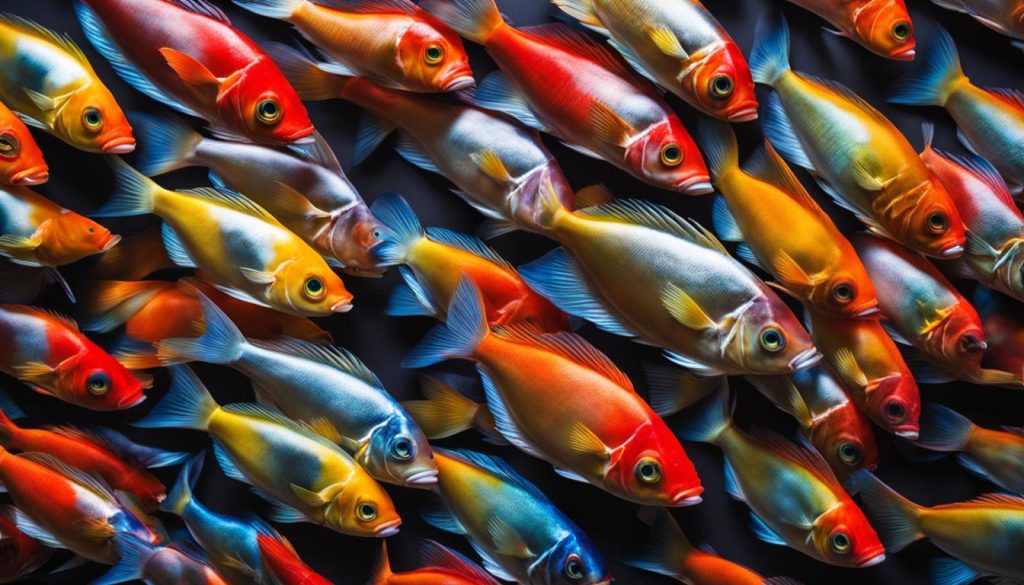 |
A stunning portrait orientation photograph showcasing the vibrant colors and intricate details of a coral reef. The water’s surface adds a captivating visual element and enhances the depth of the image. |
| This image utilizes portrait orientation to capture the graceful movement of a sea turtle, with the underwater landscape extending into the deep sea below, creating a mesmerizing composition. |
As you can see from these examples, portrait orientation can elevate the impact of your underwater compositions, bringing a sense of depth and intrigue to your photographs. By experimenting with different perspectives and including elements such as the water surface or the vast depths, you can create captivating images that truly showcase the beauty of the underwater world.
Paying Attention to Details
The underwater environment is a treasure trove of exquisite details that can elevate your photographs to the next level. By focusing on these underwater details, you can add creativity, movement, and a sense of wonder to your images.
Surface Movement: To capture the dynamic nature of the underwater world, pay close attention to the surface movement, such as gentle waves or the occasional ripple caused by wind. These subtle movements can bring life and energy into your shots. Incorporating them into your composition can create a sense of motion and add visual interest to your photographs.
Background Composition: Another essential aspect to consider is the background composition. Just like with any other form of photography, the background plays a crucial role in determining the overall look and feel of your image. In underwater photography, using bokeh or deliberately blurring the background can draw attention to your subject, allowing it to stand out prominently. Experiment with different depths of field to achieve the desired effect.
To better illustrate the impact of paying attention to details in underwater photography, let’s hear from renowned nature photographer Jane Mitchell:
“Underwater photography is a unique opportunity to witness the intricate beauty of marine life. When capturing images below the surface, it’s crucial to stay alert and open to the smallest details. The movement and play of light on the water’s surface, paired with intentional background composition, can transform an ordinary shot into a captivating masterpiece.”
– Jane Mitchell, Nature Photographer
As you venture into the underwater world, remember to embrace and showcase the exquisite details that make it so fascinating. By honing in on the surface movement and carefully considering the background composition, you can take your underwater photography to new depths of artistry.
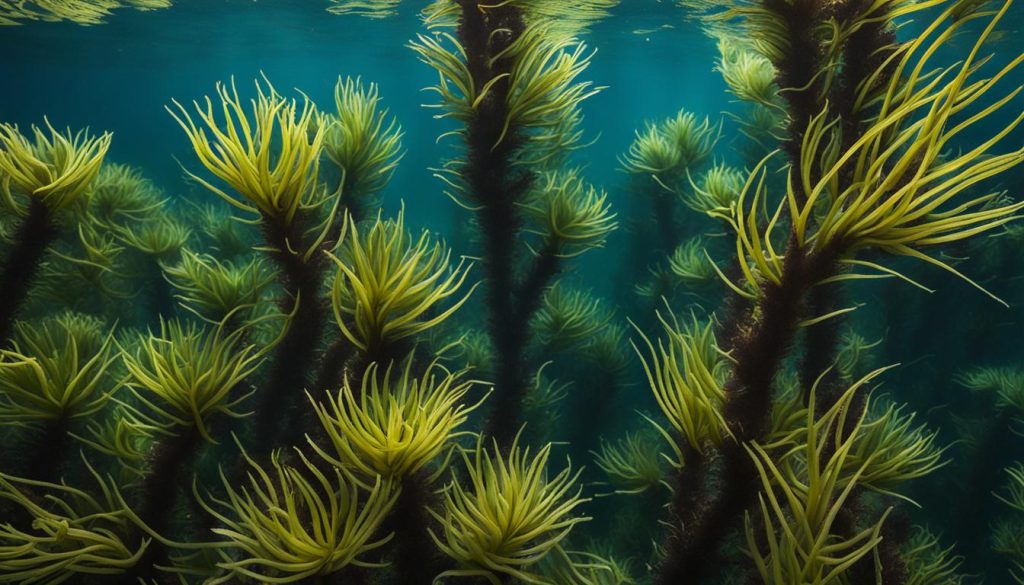
Mastering Composition Techniques
When it comes to underwater photography, composition is key to creating visually captivating images. One technique that can greatly enhance your compositions is the rule of thirds. By dividing your frame into a 3×3 grid, you can position your subject at one of the intersecting points to achieve balance and visual interest.
Aligning your focal point with the rule of thirds grid draws the viewer’s eye to the subject and creates a sense of harmony within the image. This technique works just as effectively underwater as it does on land, allowing you to create well-balanced compositions that truly capture the essence of your subject.
But composition doesn’t stop at the rule of thirds. Another important aspect to consider is the foreground and background of your composition. Paying attention to these elements allows you to add depth and context to your underwater photographs.
By incorporating foreground elements, such as corals, rocks, or sea plants, you can create a sense of scale and dimension. These elements not only enhance the overall composition but also draw the viewer’s eye into the image, leading them to the main subject. Additionally, paying attention to the background can help you eliminate distractions and create a clean, uncluttered composition.
To illustrate these concepts further, take a look at the following example:
Image: A beautiful coral reef captured using the rule of thirds composition technique.
In this image, the rule of thirds grid is superimposed, showing how the main subject, the vibrant coral reef, is placed near the intersection of the grid lines. The foreground elements, including the colorful fish and scattered corals, add depth and visual interest to the composition. The background, with its clear blue water, helps create a contrast that enhances the subject and draws the viewer’s attention. This well-executed composition technique highlights the natural beauty of the underwater world.
By mastering the rule of thirds and paying attention to the foreground and background, you can create compelling compositions that truly capture the essence of your underwater subjects. Experiment with different placements, angles, and elements to discover your own unique style and vision.
Conclusion
Underwater photography offers a mesmerizing glimpse into the captivating beauty of the underwater world. By mastering the techniques discussed in this article, you can unleash your creativity and capture stunning photographs that showcase the diverse and enchanting marine life.
One of the fundamental aspects of successful underwater photography is finding a focal point that draws the viewer’s attention. Whether it’s a vibrant fish, an interesting rock formation, or a captivating play of light, a strong focal point creates a visually compelling composition.
The use of unique angles adds depth and intrigue to your underwater images. From looking up towards the surface to incorporating the ceiling or seafloor, experimenting with different angles can yield surprising and visually striking results.
Getting closer to the subject allows you to capture the intricate details of underwater life. Employing macro photography techniques or zooming in enables you to highlight the vibrant colors, intricate patterns, and exquisite textures found beneath the waves.
Lastly, mastering composition techniques such as the rule of thirds and paying attention to details like surface movement and background composition can elevate your underwater photography to new heights. By creating balanced and visually engaging compositions, you can capture the essence and allure of the underwater world.
So, grab your camera, dive into the depths, and let your creativity flow as you embark on the exciting journey of underwater photography. Explore the underwater wonders, employ the techniques you’ve learned, and capture the enchanting beauty that lies beneath the surface.
FAQ
Are there specific techniques for underwater photography?
Yes, there are techniques that can help overcome the challenges of the underwater environment and capture stunning images of fish and aquatic life.
How can I create visually interesting underwater photographs?
Finding a focal point, such as a vibrant fish or an interesting rock formation, can guide the viewer’s eye and create a captivating composition.
Are there any unique angles I can use for underwater photography?
Yes, you can look up towards the surface or utilize the ceiling and seafloor as compositional elements to add depth and interest to your images.
How can I capture the intricate details of underwater subjects?
Getting closer to the subjects by zooming in or using macro photography techniques can help highlight the colors, patterns, and textures of the marine life.
Should I only take underwater photographs in landscape orientation?
No, experimenting with portrait orientation can add depth and visual interest to your photographs, especially by including elements like the water surface or the deep sea below.
How can I incorporate movement into my underwater photographs?
Paying attention to surface movement, like waves or wind, can add creativity and movement to your shots. You can also use background composition techniques like bokeh or blurred elements to draw attention to the subject.
What is the rule of thirds and how can I apply it to underwater photography?
The rule of thirds is a composition technique that involves aligning the subject with the intersecting points of a grid to achieve balance and visual interest. It can be applied to underwater photography by considering the foreground and background to create a strong composition that highlights the subject.
How can I capture the beauty of aquatic life through photography?
By employing techniques such as finding a focal point, utilizing unique angles, getting closer to the subject, and mastering composition, you can create stunning photographs that showcase the wonders of the underwater world of fish photography.

